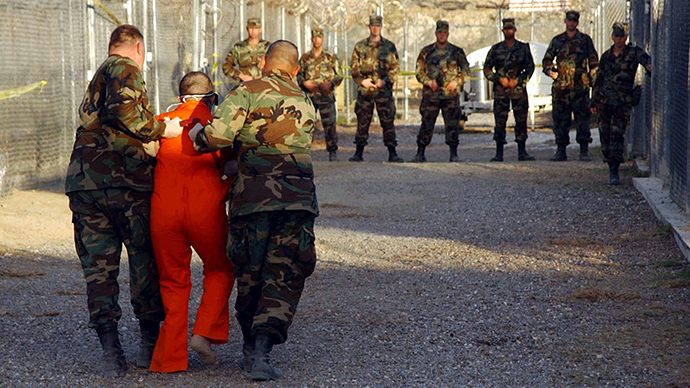Court presses US govt to act on withheld photos of post-9/11 detainee abuse

A federal court insists it wants the Department of Defense to supplement the 2,100 pictures showing US military abuse of detainees in Iraq and Afghanistan with an individual reason for not making each of them public.
Judge Alvin Hellerstein gave a week to the government on
Wednesday either to submit a written estimate of how long it
might take to comply with the August 2014 ruling and list
individual exemptions for the disclosure of the photographs, or
to appeal the court’s decision.
“I have a feeling where we are at this point – to make up a
phrase – at a line in the sand,” Hellerstein said, as cited
by the Guardian.
READ MORE: Feds’ fight to withhold CIA torture
photos may soon end
The photographs in question depict abuse at US detention
facilities in Iraq and Afghanistan following 9/11 attacks. They
are believed to be more disturbing than the notorious images of
torture and humiliation of detainees at Abu Ghraib prison.
The legal battle for making the classified cache of 2,100 abuse
photos public has been led by the American Civil Liberties Union
(ACLU) since 2004. The watchdog initiated the case after it was
denied the release of photos under the Freedom of Information Act
(FOIA).
Hellerstein ruled in 2005 that the government had to make the
pictures public. The ruling was supported by the Second Circuit
Court of Appeals in 2008.
However, a bill passed by the US Congress in 2009 made it
possible for the Department of Defense to conceal images it
deemed dangerous for Americans. That same year, President Obama
denied the release of the photographs on the grounds they would
“further inflame anti-American opinion and … put our troops
in greater danger.”
READ MORE: Obama admin withholding 2,100 US
military torture photos
The bulk concealment of abuse pictures is something judge
Hellerstein believes wrong. That’s why he ruled in August 2014
that individual reasons should be given for the non-disclosure of
each of the photos.

The government has not complied, providing instead a general
assessment of the photos, done by associate deputy general
counsel Megan M. Weis. She sorted the photos into three
categories based on the extent of injury suffered by the
detainee, if a US service member was depicted and the location of
the photograph. Weis then took samples from each of the
categories and showed them to a group of senior military
officials, who recommended that CIA Director Leon Panetta keep
the images secret.
“I could give you more time to satisfy my ruling...but I am
not changing my view,” Hellerstein told the government on
Wednesday, as cited by Newsweek.
“Some are harmless” he said of the pictures, while
describing others as “highly prejudicial.”
Hellerstein also offered looking through the images with the
government, as a way of complying with the court ruling.
In December, the intelligence committee of the US Senate released
report detailing the CIA’s use of torture on prisoners in the
wake of the September 11, 2001 terrorist attacks.
READ MORE: Senate accuses CIA of torturing
prisoners, overstepping legal boundaries
Sleep deprivation and the simulated-drowning practice known as
waterboarding were listed among the so-called enhanced
interrogation techniques used by the CIA.
The report released to the public consists of only a 524-page
summary out of the full 6,000-page document. It has most of the
details blacked out, such as the names of those involved.
The UN and major human rights groups have urged prosecution of
those responsible US officials, listed in the Senate’s report.
The Justice Department however said it would not pursue charges.
READ MORE: Facing justice: UN, HRW, Amnesty call for
prosecuting US officials for torture












